Raphael Gualazzi: Italian Song and Piano with Orchestra at Udin&Jazz 2025

A Special Evening at Castello di Udine
Castello di Udine, July 18 2025
On Friday evening, Udin&Jazz 2025 delivered yet another special treat for music lovers. Italian singer, pianist, and songwriter Raphael Gualazzi joined the Orchestra Naonis for a compelling performance of his original compositions. The setlist offered a well-balanced mix: Italian canzonas, jazz-flavored English songs, and, additionally, instrumental pieces showcasing Gualazzi’s stellar, technically impressive piano skills.
The beautifully lit Castello di Udine, bathed in blue hues for the occasion, provided a stunning backdrop as the Orchestra Naonis took their places. Meanwhile, the audience—a diverse mix of generations—welcomed Gualazzi warmly when he took the stage, beginning the concert with an intimate piano introduction.
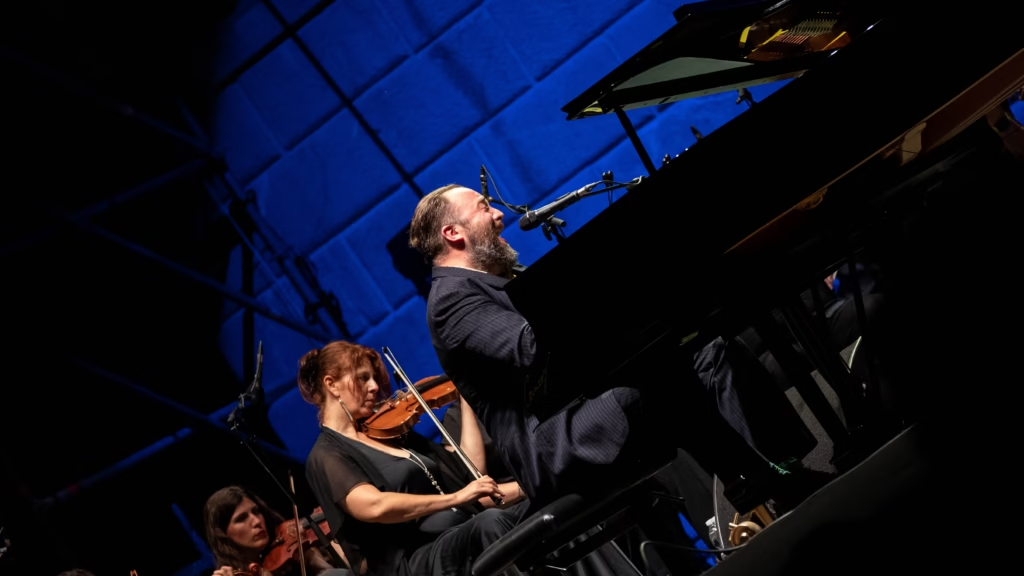
Trio Beginnings and Orchestra Collaborations
Gualazzi started the show with three songs performed by his trio, featuring Anders Ulrich on double bass and Gianluca Nanni on drums. Firstly, the opening number, “Jameson’s Lament” from Love Outside the Window, was a slow swing featuring a delightful stride piano style rarely heard today. Gualazzi’s voice blended smoothly with the rhythm section, which supported him subtly and skillfully.
Next, he performed the medium swing “Un Mare In Luce,” sung in Italian from Happy Mistake. This time, he took a longer piano intro that was a real highlight. It is always a treat to hear a good-sounding piano, and that evening, it truly shone. Then, the trio closed this section with a bluesy rendition of “Love Outside the Window,” the title track from his 2005 debut album. This mix of jazz tunes, bilingual lyrics, and expressive solo work held the audience’s attention throughout the evening.
Afterward, conductor Stefano Nanni joined the stage to lead the Orchestra Naonis for the remainder of the concert. The string players from the Friuli-Venezia Giulia region enriched the atmosphere, with the orchestra’s sound filling the historic venue beautifully. Notably, Nanni’s arrangements blended seamlessly with Gualazzi’s voice, as heard on “Vivido il tramonto” from Dreams — an easy rumba beat adorned with lush strings creating a lovely contrast.
They then followed with “Malinconia di averti,” a ballad co-written with Sicilian authors Kaballà and Tony Canto, also from Dreams. The orchestral ballad setting allowed Gualazzi’s vocal interpretation, in the style of traditional Italian canzonas, to shine, evoking a nostalgic journey through time.
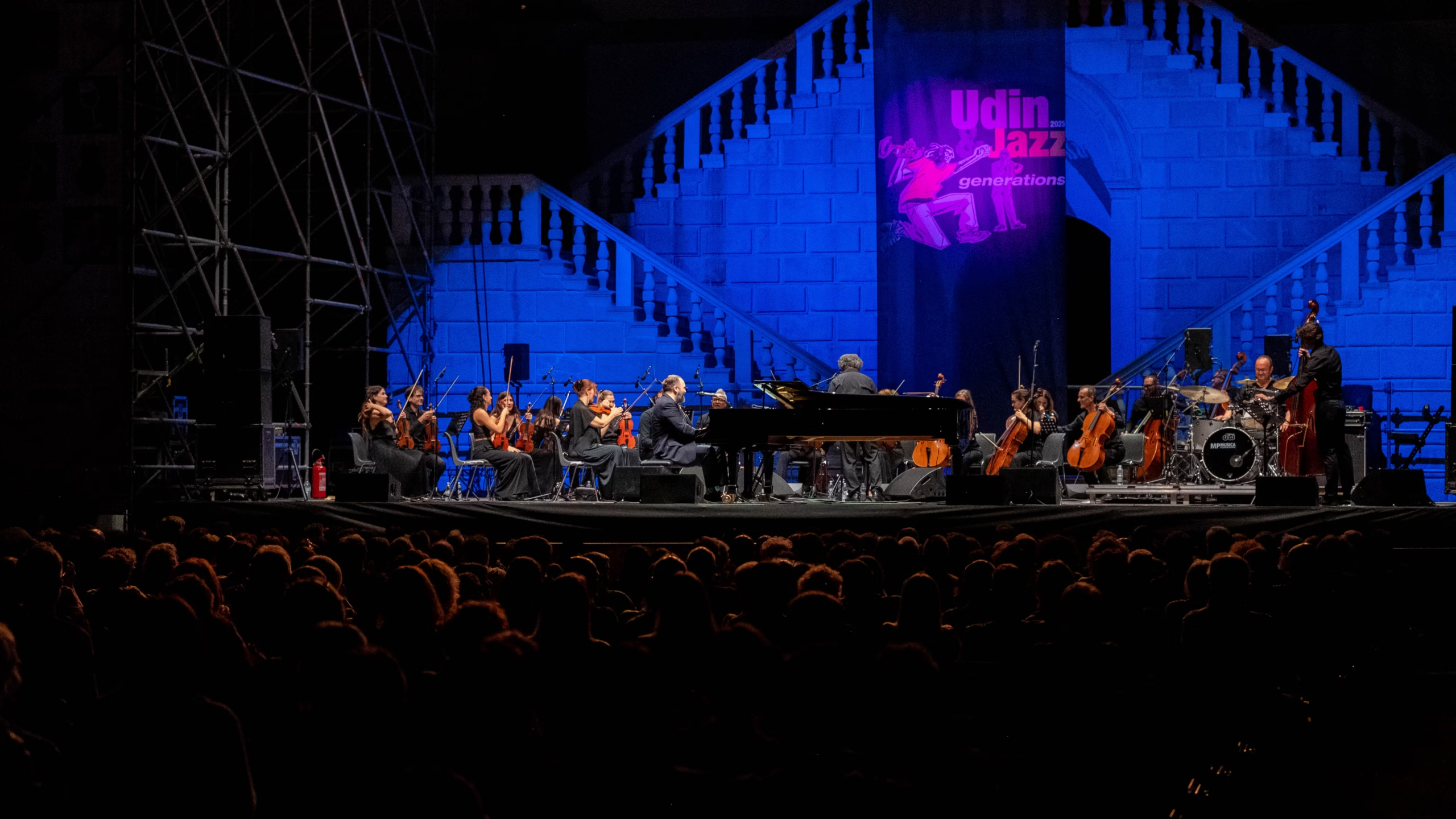
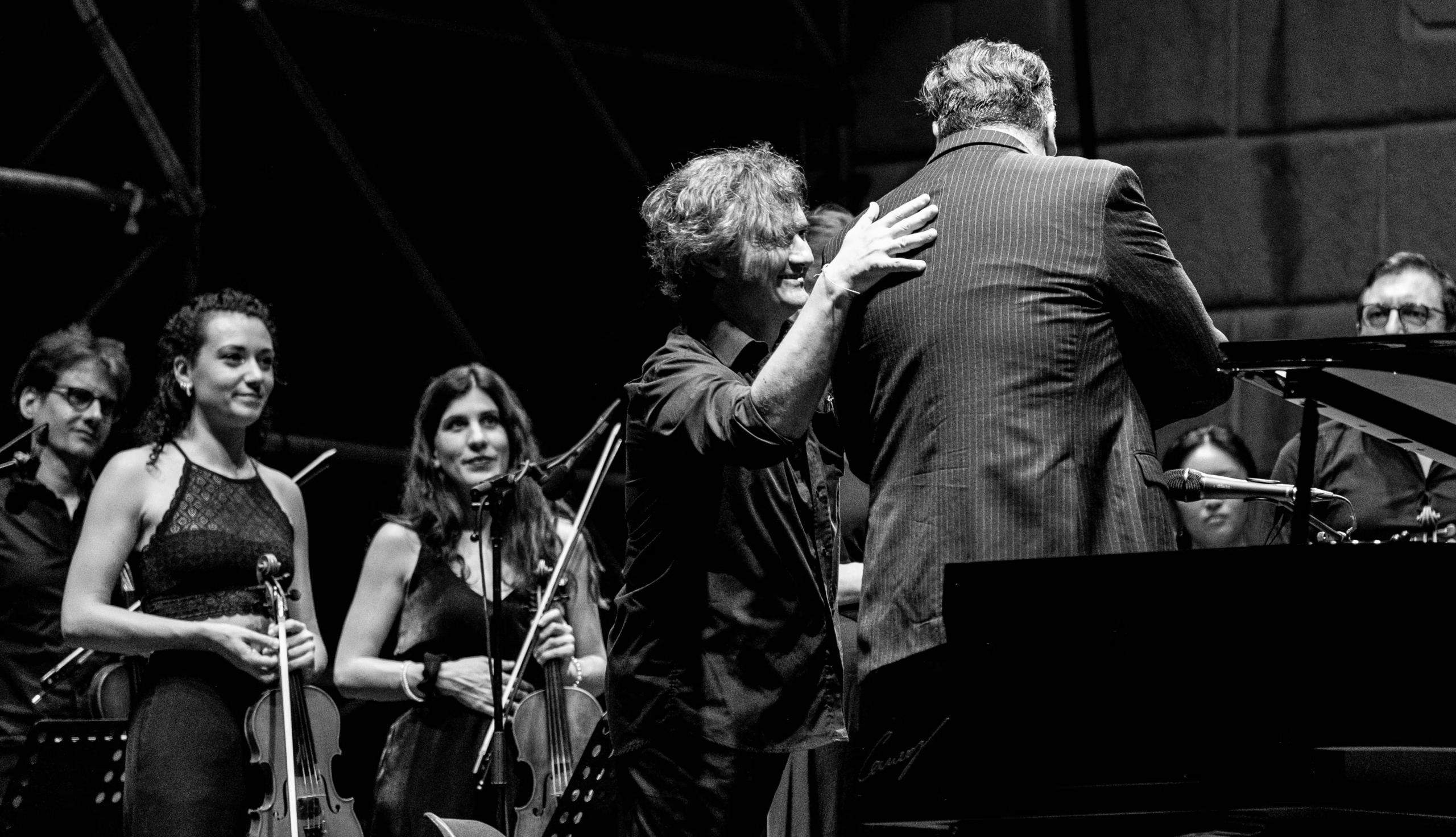
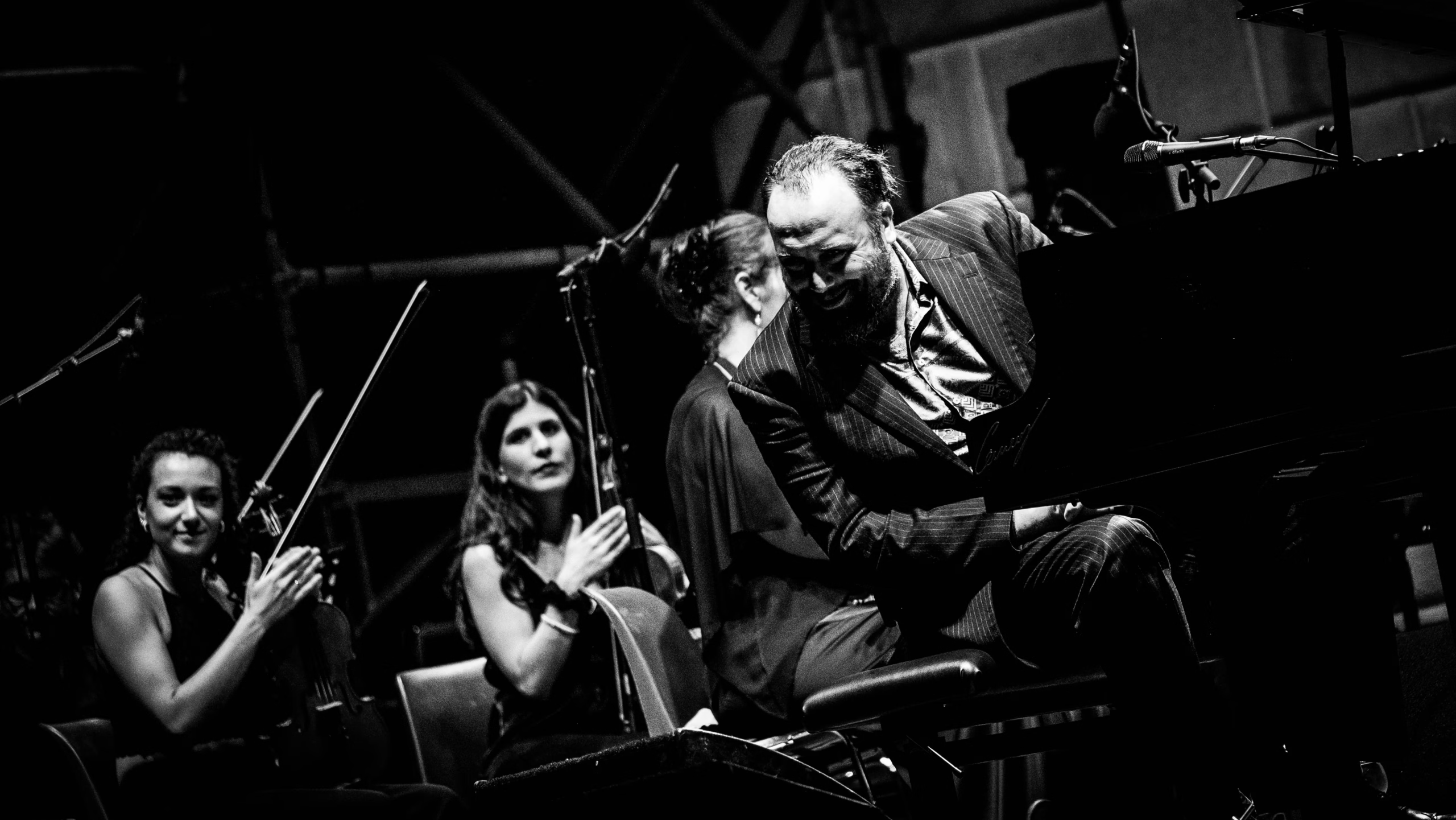
Shifts in Mood and Style
The concert maintained a reflective mood with “A Song For Your Soul,” a slow 6/8 soul-influenced ballad where Gualazzi adopted a soulful vocal approach. Then came “Splende Il Mattino,” from his 2016 album Love Life Peace, showcasing a strong chorus typical of Italian pop — a testament to Gualazzi’s evolution as a songwriter and his long-standing popularity at Sanremo.
Introducing the violin and cello soloists, Gualazzi returned to swing with his trio, giving space for solos from Ulrich and Nanni. The cinematic-flavored “A Devil Crying,” arranged masterfully by Nanni, featured a surprising switch from a powerful ballad into a fast shuffle piano solo.
On “Italiá,” Gualazzi revealed his satirical side. Announced as a satirical piece on migration, the song unfolded as a sharp, ironic commentary on colonial legacy, shifting identities, and Europe’s fractured response to human displacement — delivered with biting wit and theatrical flair.
The crowd also enjoyed his 2011 Sanremo debut, “Follia d’amore,” which took him to Eurovision in Düsseldorf. Switching between Italian and English (“Madness of Love”), Gualazzi played another stunning double-time piano solo.
A Jazz Homage and Intimate Finale
“Sarò Sarai,” a heartfelt homage to jazz, followed, introduced by Gualazzi with a personal dedication to the audience. His 2013 Sanremo entry “Sai” came next — a powerful ballad — followed by a solo piano piece that allowed the audience to soak in the perfect acoustics of Castello di Udine.
Next, a trio arrangement of Giuseppe Verdi’s aria “Noi siamo zingarelle” from La Traviata concluded the main program, featuring a fast piano solo and a clear, expressive double bass theme by Ulrich.
For the final regular number, Gualazzi stepped forward with a ukulele, while Stefano Nanni took the piano and conducted the orchestra from the stool — a relaxed, joyful moment clearly enjoyed by the musicians. They performed Dos Gardenias, a classic Cuban bolero, bringing a warm, nostalgic close to the set. The audience responded with a standing ovation.
The encore was “Vertigo,” an intimate ballad Gualazzi co-wrote and recorded with renowned Italian opera singer Andrea Bocelli, performed in English that night — a perfect close to an evening full of wonder, diverse musical styles, improvisation, and atmosphere.
Conclusion
The Udin&Jazz 2025 organizers once again delivered a memorable evening, blending tradition and innovation to captivate a wide-ranging audience. Although unfamiliar with much of Gualazzi’s repertoire before the concert, his songwriting and piano playing revealed a captivating balance of Italian tradition, jazz, and pop sensibilities. Ultimately, this performance not only celebrated musical diversity but also affirmed the festival’s role in connecting generations through rich and varied programming.
Enjoyed this review? You can check out more of our concert reviews for deeper dives into the performances that move us.



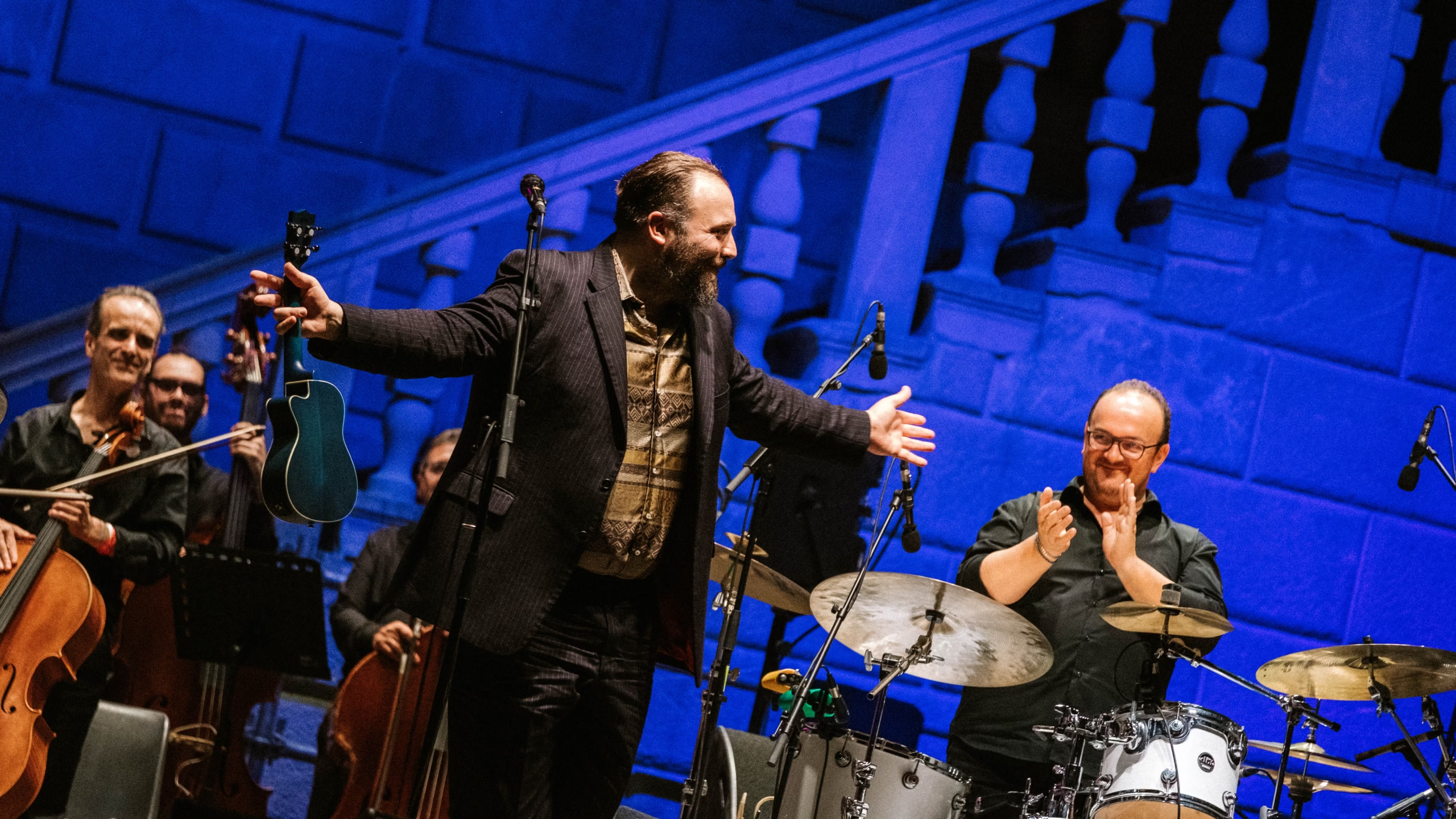

Comments are closed.